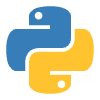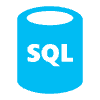Freelance Data Analyst Jobs Online: Filtering Quality From Quantity

Freelance Data Analyst Jobs Online: Filtering Quality From Quantity
What Is a Freelance Data Analyst?
Steps to Filter Online Opportunities
1. Verify Project Scope
2. Check Payment Accuracy
3. Inspect Communication Style
4. Confirm Technical Match
Reasons to Consider Commission-Free Platforms
Showcase Portfolio Highlights
Scale Your Freelance Data Analyst Career
FAQs about Freelance Data Analyst Jobs?
Final Thoughts
Freelance Data Analyst Jobs Online: Filtering Quality From Quantity
I’ve been freelancing as a data analyst since 2020. In the beginning, I thought the hardest part would be finding clients. Turns out, the real challenge was figuring out which clients were actually worth working with.
There are thousands of freelance data jobs out there—many of them vague, underpaid, or mis-scoped. After a while, I started to see patterns: the difference between a solid opportunity and a mess waiting to happen often came down to how the job was described and who was posting it.
This article isn’t about how to “land your dream gig.” It’s about how to tell quality from chaos when scrolling through endless listings.
What Is a Freelance Data Analyst?
A freelance data analyst helps businesses answer questions using data. That could mean cleaning spreadsheets, building dashboards, or running statistical models—often all in the same week.
Unlike in-house analysts, freelancers aren’t tied to one team, one boss, or one industry. They move between clients and projects, depending on what’s available and what fits their skillset.
This flexibility means they might analyze sales data for an e-commerce brand one month and help a nonprofit with survey design the next. It also means juggling different tools, timelines, and expectations.
Freelance data analysts use multiple platforms to find work—some public, some private, some invite-only. Over time, many of us build a mix of sources: direct clients, long-term agency partners, and curated networks that match our niche.
I once went from debugging a Tableau dashboard for a vegan meal service 🥦 to forecasting demand for a drone delivery startup in the same week. Freelance life is weird like that.
Each platform has its own rhythm. Some are fast-paced and high-volume; others are slower but more predictable. Most freelancers learn to stack opportunities across platforms and seasons to keep things steady.
Steps to Filter Online Opportunities
By April 2025, most experienced freelance data analysts have already learned that volume doesn’t equal value. New listings appear hourly across platforms, but many of them are either poorly scoped, underpaid, or written by clients who aren’t sure what they’re asking for.
Filtering jobs isn’t just about skipping the lowest rates—it’s about spotting the signals that indicate whether a project is actually executable based on your expertise, time, and tools.
1. Verify Project Scope
A well-scoped project includes three things: objectives, data availability, and timelines. If a job post says “need help with data” and nothing else, it’s a risk.
Look for phrases like “we have three CSV files from Shopify and want to visualize monthly churn” or “goal is to build a Power BI dashboard using cleaned sales pipeline data.” The more specific the input and outcome, the less likely you'll spend unpaid hours decoding expectations.
“We just need some dashboards” often means: no KPIs, no data dictionary, and no upper limit on revisions 🚩
Timeline matters too. A report due in 48 hours with no data shared upfront usually ends up rushed or delayed.
2. Check Payment Accuracy
Compare the listed budget with how long the work would realistically take at your hourly rate. A $300 budget for a dashboard built from scratch, with no existing data model, is often misaligned.
Use your own benchmarks. For example, if a project requires writing a custom Python script for time series forecasting and the client offers a flat $100, it’s likely undervalued. If the same client wants weekly updates and stakeholder meetings, that flat rate becomes even more problematic.
Some clients base pricing on general tech support rates, not specialized analytics. A quick message asking if they’re expecting data engineering or just visualization can clarify scope creep before it starts.
3. Inspect Communication Style
Posts with full sentences, structured points, and context (like “this is part of a larger Q2 campaign”) tend to come from clients who’ve worked with freelancers before.
When clients reply to your questions with vague answers like “just do what you think is best,” expect ambiguity throughout the project. It helps if they’re open to sharing anonymized data samples or prototypes before the project begins.
Quick response times and specific feedback (“please filter out test users before calculating retention”) also signal a smoother workflow.
If a client uses phrases like “super easy task” and “shouldn’t take long,” it often means they haven’t done it themselves.
4. Confirm Technical Match
Some jobs list every tool under the sun—“must know SQL, Tableau, Power BI, Looker, Python, and R.” These can be repurposed templates or posts from non-technical managers copying buzzwords.
Match the job requirements to what you’re actually comfortable delivering. If you specialize in SQL and Tableau, a post emphasizing custom Python APIs probably isn’t a fit, even if the rate looks appealing.
Projects that align with your core skills are more efficient to complete and easier to price accurately. They also result in better outcomes, which help build your portfolio and lead to referrals.
Stretching into unfamiliar tools mid-project usually means unpaid learning time or missed expectations.
Reasons to Consider Commission-Free Platforms
Most traditional freelance marketplaces charge service fees between 10% and 20% per project. These charges are deducted from the freelancer’s payout before funds are released. In multi-milestone projects, this fee structure compounds over time, especially when revisions or scope changes occur.
Some platforms also include hidden charges, such as withdrawal fees, VAT processing, or currency conversion markups. These aren’t always visible in the job post or initial client agreement. For freelancers working across borders or with small-ticket projects, the total cost of using these platforms can exceed the value of the work.
Had a $500 dashboard project once. After fees, currency conversion, and delay penalties, I cleared $384. That’s not just annoying—it skews how you price future work.
Contra eliminates commission charges entirely. Freelancers keep 100% of what they earn. Clients pay what they agree to, and freelancers receive the full amount. The platform doesn’t withhold money or insert platform-driven fees into the transaction.
This model also simplifies negotiation. Without platform-imposed rate floors, caps, or fee tiers, both parties can agree on pricing based on actual project value. If a project requires 10 hours of SQL optimization and 3 hours of client training, both sides can clearly scope and price accordingly.
Direct relationships between freelancers and clients on Contra also reduce misunderstandings. Projects come with cleaner briefs, clearer expectations, and fewer intermediaries. Communication happens in context, not through ticketing systems or third-party chat restrictions.
“Can you clarify what you meant by ‘clean the data’?” hits different when you’re not typing it into a platform inbox with a 1,000-character limit.
By removing the friction of third-party markups and layered communication, commission-free platforms like Contra offer a cleaner baseline for freelance data analyst work. The price quoted is the price received. The brief shared is the brief discussed. And the relationship built is between two people—not two accounts managed through platform filters.
Showcase Portfolio Highlights
Client acquisition depends on proof. A portfolio that includes actual deliverables—clean dashboards, structured case studies, or clear before-and-after metrics—reduces friction during early conversations. These examples simplify the vetting process for clients who don’t always know how to assess technical skill.
Basic screenshots of dashboards are common, but they’re not always useful. Including context—like the business question solved, the tools used, and the outcome—makes the work legible to non-technical audiences. A short paragraph or bullet summary per project is usually enough.
“Built 4 dashboards” tells less than “Built a Power BI dashboard to track user churn (20% reduction over 3 months) using SQL + DAX.”
Dashboards alone don’t communicate impact unless they’re paired with business results. If the project led to measurable improvement (e.g., increased conversions, reduced reporting time), include that. Even estimates are better than none.
Data storytelling also works. If a project uncovered something unexpected—like a retail client discovering that returns spike after weather events—summarize that insight. These narratives help clients understand how your work connects to decisions.
For example:
Cleaned and joined 3 disparate sources (Shopify, Google Analytics, CRM) for a B2C client
Built a Looker dashboard that reduced weekly reporting time by ~6 hours
Used regression to forecast Q3 demand for a subscription service (actuals were within 7%)
Created a cohort retention view that identified a product onboarding issue (fixed in <2 weeks)
Portfolios don’t need to show everything. Three to five strong examples, with enough detail to signal scope and outcome, are usually sufficient. Older projects can be condensed or archived if they no longer reflect current skill level.
Some freelancers include GitHub links or public Tableau dashboards. Others use Notion pages or PDFs. Format matters less than clarity. Avoid jargon, skip long intros, and let the work speak directly to the kind of projects you want to keep doing.
“Here’s what I did, how I did it, and what changed” is often enough.
Scale Your Freelance Data Analyst Career
Repeat clients tend to offer more predictable work, faster onboarding, and less negotiation. The most common reasons clients rehire include quick delivery, clear communication, and consistent documentation. Sending a brief post-project summary or dashboard walkthrough often triggers follow-up requests 2–3 months later.
Referrals usually come from successful internal projects being shared across departments. When possible, ask for permission to showcase anonymized versions of your work. Passive referrals—new project invites from someone who “saw your dashboard in the marketing team’s folder”—are more common when files are clean, labeled, and well-structured.
A reusable PowerPoint export with embedded Tableau screenshots got me three unrelated gigs. Branding your work helps it walk on its own.
Skill stacking expands project eligibility. Since January 2024, machine learning features have appeared more regularly in data analyst job listings, especially for time series forecasting, churn modeling, and recommendation systems. Entry-level ML (e.g., scikit-learn regressions, clustering) now complements traditional analytics in mid-sized project scopes.
Specialized verticals like healthcare, logistics, and fintech are also increasing requests for domain-specific analysis, such as HIPAA-compliant reporting or fraud detection metrics. Certifications in sector tools (e.g., SAS for pharma, dbt for data transformation pipelines) tend to show up in higher-budget listings.
Learned XGBoost for fun. Ended up using it in a pricing elasticity project with 400k rows and no documentation 😅
Balancing multiple clients requires knowing your own throughput. Most freelance data analysts handle 2–4 clients concurrently, depending on scope. Projects with unclear data or shifting requirements take longer than those with structured pipelines and defined KPIs.
Time blocking works better than multitasking. Reserving mornings for code-heavy work (e.g., SQL transformations, Python scripts) and afternoons for client communication helps maintain context. Shared Notion boards or weekly Loom updates reduce sync meetings.
Using simple tools like Toggl or Clockify to track time spent by project helps flag low-yield engagements. If a $400 task consistently eats up 8 hours due to client revisions, it may not be worth renewing.
The project that takes “just an hour” every week becomes the one that derails your Thursday 😵💫
Resource planning starts with estimating buffer time. Even well-scoped projects tend to expand by 10–20% due to minor changes. Avoid stacking deadlines closer than 48 hours apart, especially if they depend on client feedback or third-party data delivery.
Staggering project phases—one in discovery, one in execution, one in delivery—keeps workload stable. Accepting two simultaneous projects in the same stage often leads to context switching and error-prone handoffs.
FAQs about Freelance Data Analyst Jobs?
Is it possible to freelance as a data analyst?
Yes. It’s common. Many companies—especially startups, agencies, and mid-sized teams—hire freelance data analysts for short-term needs, audits, or ongoing support without committing to full-time roles.
Clients usually expect basic technical proficiency (SQL, Excel, BI tools), a portfolio of past work, and the ability to interpret ambiguous goals. Some expect analysts to work independently with minimal guidance; others provide detailed instructions and want frequent updates.
The scope varies. One project might involve cleaning messy survey data in Google Sheets. Another might involve writing Python scripts to automate reporting from a third-party API. Most clients assume freelancers can handle both the analysis and the communication that surrounds it.
Freelancing in data often looks less like “big data” and more like “why doesn’t this dashboard match what I see in the CRM?”
How do I manage a client who isn’t sure what they need?
Start by asking specific, answerable questions. For example, “What decision are you trying to make with this data?” or “What would success look like at the end of this project?” Avoid asking, “What do you want analyzed?”—they usually don’t know.
If the client can’t describe what they want, ask for a sample dataset or a screenshot of their current report. Use that to reverse-engineer a basic scope. Suggest two or three possible directions, each with a short description and estimated time.
This reduces ambiguity. It also shows the client what’s realistic. If they ask for “predictive analytics” but only have three weeks of transactional data, you can steer them toward exploring customer segments instead.
“We want insights” often translates to “we don’t want to look at spreadsheets anymore.”
Do I need advanced certifications to stand out?
Certifications help when clients can’t evaluate technical skills directly. They’re also helpful on platforms that filter search results based on credentials. But they’re not required.
Clients care more about whether you’ve done similar work before. A clean, well-explained dashboard from a past project is often more convincing than a badge. A GitHub repo showing how you handled missing data or structured a cohort analysis is more legible than listing “Coursera: Advanced SQL.”
Certifications signal commitment, not competence. Real-world examples show how you think, what trade-offs you make, and how you communicate results.
A Tableau Specialist certificate won’t save you if your dashboard has 22 filters and no labels 😬
Final Thoughts
As of April 14, 2025, most freelance data analysts aren’t struggling to find work—they’re struggling to filter it. Projects still arrive without structured scopes, with vague requests like “help us analyze our customer data” and no mention of timeline, data format, or outcome.
Well-defined job posts reduce revision cycles, clarify deliverables, and shorten onboarding time. The presence of a data dictionary, sample files, or even a single objective metric (e.g., "increase form conversion by 10%") changes the entire shape of the engagement.
Transparent communication matters more than tool stacks. Clients who answer screening questions with specifics—"we’re missing month-over-month churn by segment"—tend to be easier to work with and more engaged in the process. That clarity also helps with pricing accuracy.
Reasonable pay is rarely about high budgets. It’s about alignment. A $1,200 budget for a two-week dashboard project is fair if scope, feedback loops, and data readiness are all known. A $300 budget for a six-tab Excel audit across five departments is not.
"We just want a few charts" is usually a six-layer request hiding behind a three-word brief 😶🌫️
Commission-based platforms continue to subtract 10–20% from freelancer payouts. These fees don’t improve project quality and often reduce trust on both sides, especially when dispute resolution favors volume over context.
A commission-free model allows freelancers to quote clean rates, invoice without translation loss, and maintain direct client communication. It also removes the incentive to rush through projects to offset percentage losses, which often leads to lower-quality work.
Freelancers working through commission-free platforms retain more control—not only over earnings, but also over client selection and long-term relationship building. This control reduces churn and increases the likelihood of repeat work.
Keeping the full $500 is better than chasing another $100 to offset platform cuts 🧮
In a saturated market, clarity, not volume, protects your time. When both the freelancer and the client understand the scope, timeline, and compensation from the start, the job becomes one less thing to debug.
Like this project
Posted Apr 15, 2025
Freelance Data Analyst Jobs Online: Learn how to filter high-quality gigs from low-value listings and avoid underpaid, mis-scoped freelance projects.











